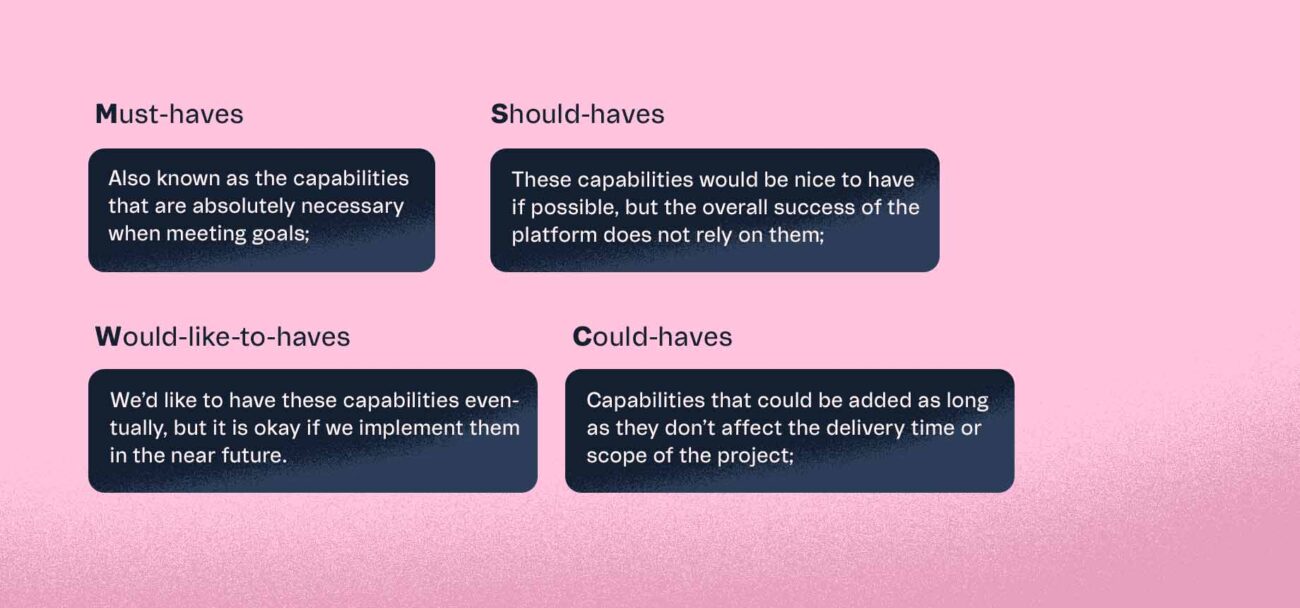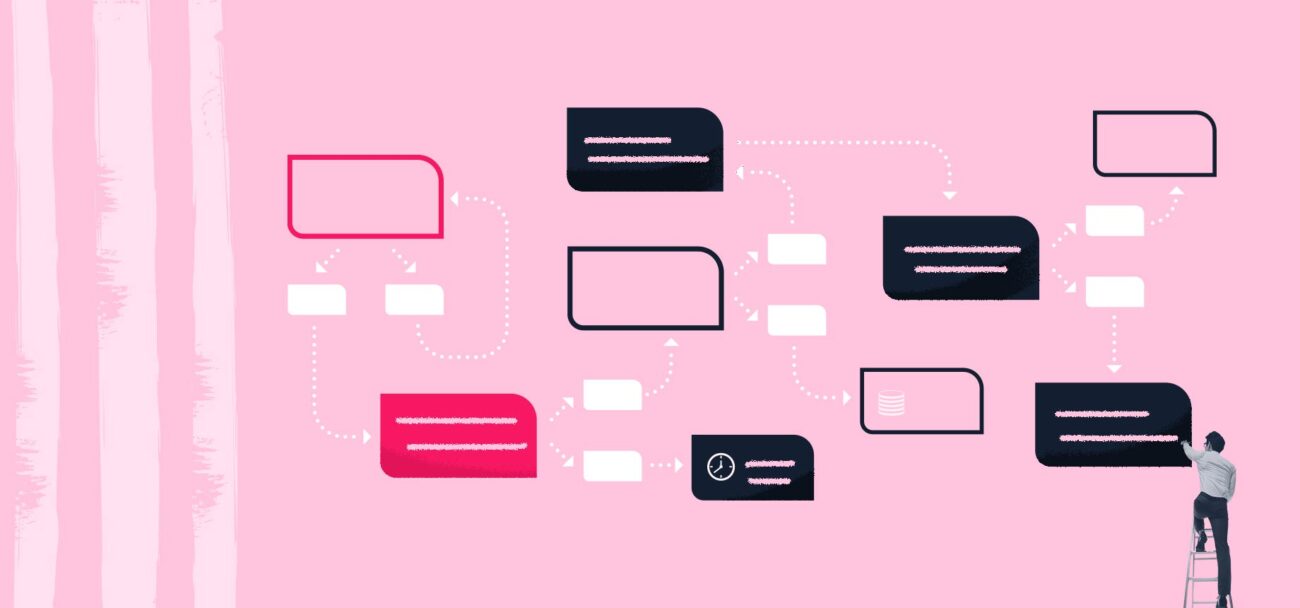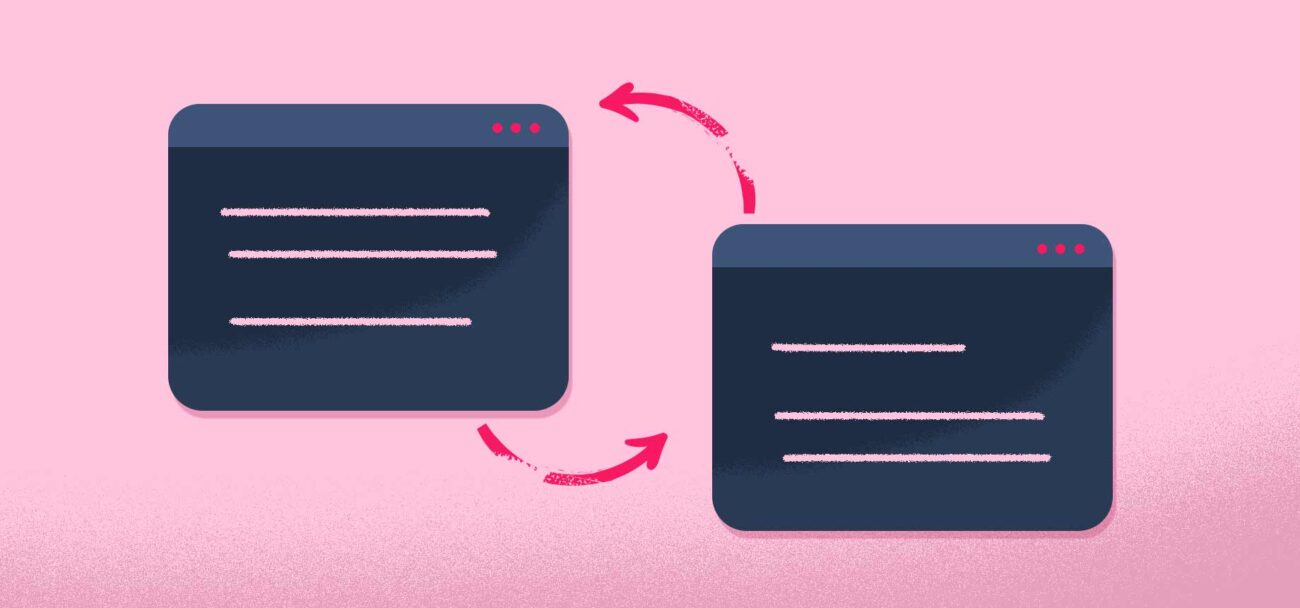
Because of its various details, time consuming tasks and high cost, the ecommerce replatforming process involves different decisions that need to be made strategically and aligned with the company’s vision for the desired future and milestones. All this while saving time and money and making the most out of already existing systems.
In that sense, choosing what features to prioritize when starting the project is a hard job. To do so, it is necessary to understand the business’ current scenario, where it is headed and how specific industries are looking at digital commerce expansion. Only with these in mind should business owners discern which topics to focus on first and so on.
There are many ways to define which are the decisions to be made when to make them and how: Through research, trends analysis, brainstorming sessions and/or prioritization. No matter which way you do it, the end goal is the same – rank requirements and reduce that long wishlist of features for your new ecommerce website.
A great method to be used in this case is the MoSCoW one, mostly used by managers, decision-makers and teams when starting a brand new project.
What is the MoSCoW method?
The MoSCoW method is a prioritizing exercise based on breaking down everything you may need to complete a project in four categories, following the acronym MoSCoW, which in this case means:

This method helps companies everywhere to balance rewards and resources by making the most out of the rewards while using fewer resources. In ecommerces, it is highly used for defining the difference between basic needs and any extra feature that online stores want to have in their ecommerce replatforming project.
Using the MoSCoW method when replatforming

From data migration structure, new and helpful integrations to improving customer experience and conversion rate, all elements should be considered when going through an ecommerce platform migration and applying the MoSCoW method. Also, companies can use it to better calculate the total cost of opportunity of replatforming.
To better apply the method, the first tip is making a list of everything that your team may consider necessary when migrating platforms. Whether it’s just focusing on the transfer of information such as product and client’s data or going over what new functionalities this ecommerce platform can bring to the online business, jot them all down. All in all, it’s a fun exercise to sort priorities and make sure that everyone from your team has the same vision and understanding of the future of the company.
Must-haves
The must-haves are the most important part of the method and they should include everything that is absolutely necessary for the migration process. This step is all about simplicity: what should you do to reach your main goal of replatforming? What are the things your ecommerce can’t operate without?
Make sure that all the basic needs for a healthy ecommerce operation are guaranteed during the process of replatforming. This prioritization exercise is not only good for defining what to do but also for defining how fast something should be done.
For instance, an SEO audit of the website and a solid data transfer of catalog and taxonomy are essential steps when migrating product pages. How to do it properly? Hiring an external agency to help is a good solution and probably one of the first things to do. Any kind of content management inside your ecommerce site should be a priority for online retailers, as well.
Make sure that your new ecommerce platform has easy and fast ways to do this migration, especially if they have an all-in-one solution like VTEX does. With an integrated Order Management System, data migration is done easier and the end result is a clear view of all store operations.
Future-proof vision
Having a future-proof vision inside an ecommerce platform is being able to know how much can be done within that same platform without having to constantly migrate due to obsolescence.
Features like scalability and automatic updates – mostly offered by cloud or SaaS platforms – are two of the most popular ones. Alongside comes headless capabilities and easy to add components, making it effortless to add up any kind of new idea that pops up eventually.
Should-haves
The should-haves are the types of functionalities that don’t affect the entire outcome of the replatforming process. If you are able to fit any of the should-haves in, good for you. If not, these can definitely wait for a more mature time of the migration process.
One good example is migrating to an ecommerce platform that offers marketplace as a way of selling. If your company is not focused on marketplace operations yet, there is no need to prioritize that. But keep in mind that marketplaces are a trend and that most ecommerce websites will go down that path. Therefore, it is good to consider that as a should-have.
Just be prepared because should-haves can become must-haves depending on the pace of the project. As we’ve mentioned, replatforming is challenging and there are going to be some bumps on the road so look out for having to reprioritize tasks as you implement this new platform.
Could-haves
Some of these capabilities can be a new payment method, for instance. That will be a new feature inside the financial scope of the migration, as long as it doesn’t harm any other ongoing project coming from the financial department.
Sometimes, the could-haves are functionalities from a list of things that weren’t possible to be done in the previous platform and that are available in the new one. Don’t mix up things, though, and remember that could-haves are usually add-ons to must-have capabilities and a way to improve them when coming to a new platform. Also, keep in mind not only your business needs but also some of your customer needs when defining these capabilities.
Would-like-to-haves
This is the dream step. Have you ever thought about adding crazy, never-seen-before ideas to your business but rarely seen the right moment or allocated enough resources to try it out? That’s what the W in MoSCoW stands for. List out every idea and share it with your team to understand what kind of priority you should give them.
Also, gathering these capabilities is a good way to choose the ideal ecommerce platform for your business model because it can showcase a glimpse of what is possible to be done according to desired future needs for your online business.
The MoSCoW method, wrapped-up

The MoSCoW method is a very good way to define what kind of priorities are necessary for your business not only during a replatforming project but also when figuring out new strategies and when to follow through with them. There is no way of predicting the future of digital commerce, but there are ways to be prepared for it. Organizing your wants and needs through the MoSCoW method is a good first step in that direction.












